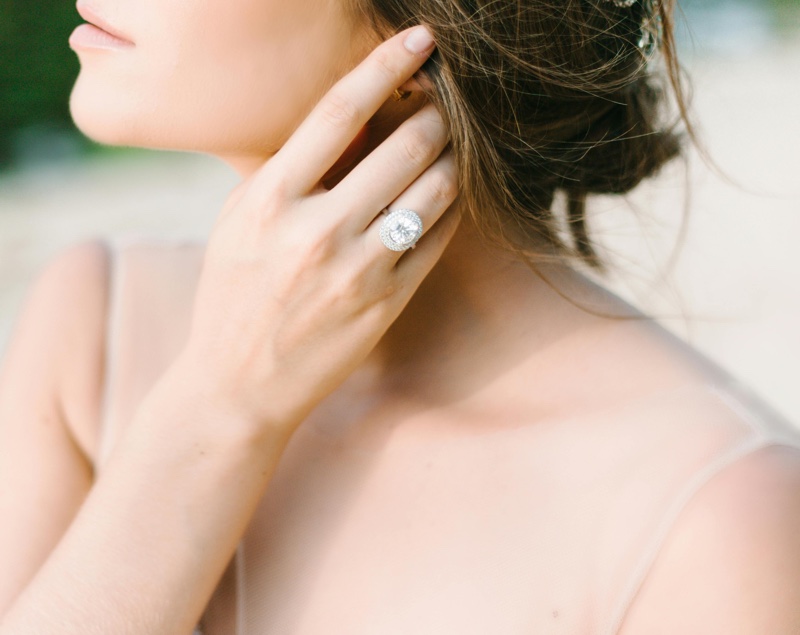
With their unparalleled hardness and brilliance, the different types of diamonds have always captivated people’s imaginations. But what makes them so unique?
A diamond is a naturally occurring gemstone known for its unparalleled hardness and brilliance, often showcased in exquisite pieces of jewelry. It is composed entirely of carbon atoms arranged in a cubic crystal structure.
This combination of strength and elegance has led to centuries of admiration. For many, diamonds evoke images of luxury and romance, particularly as the centerpiece of a ring to propose with.
From the allure of colorless stones to the mystique of fancy-colored gems, diamonds have a way of telling a unique story.
Types of Diamonds: Grading Scale
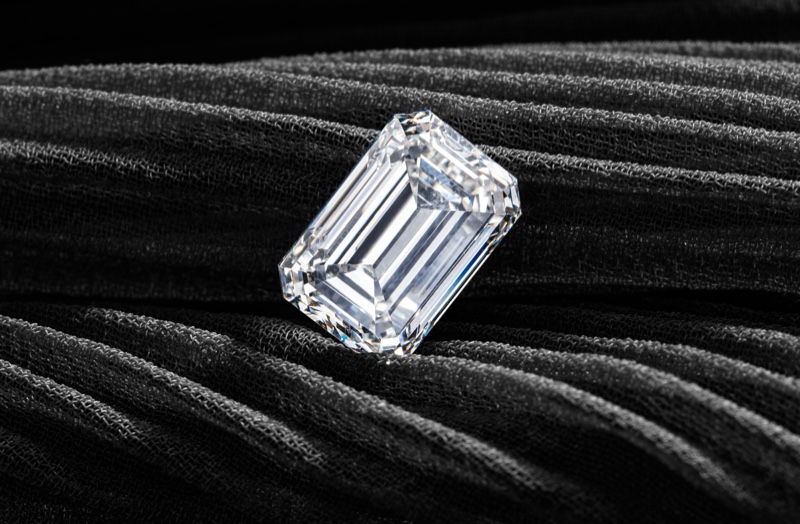
The diamond grading scale is a system used to evaluate and describe the quality of a diamond based on four primary characteristics, commonly known as the Four Cs: Carat Weight, Color, Clarity, and Cut.
These characteristics are standardized by the Gemological Institute of America (GIA) and other gemological organizations.
Cut
Cut refers to how well a diamond’s facets are proportioned and aligned, with a particular emphasis on symmetry. This affects its brilliance, fire, and overall sparkle. The cut determines how effectively the diamond reflects light and is a key factor in the diamond’s visual performance.
A well-cut diamond reflects light better, making it appear brighter and more valuable. The quality of a diamond’s cut is graded on a scale from Excellent to Poor.
Clarity
Clarity refers to the presence of flaws, known as inclusions (inside the diamond) and blemishes (on the surface). Diamonds with fewer imperfections are more valuable.
The clarity scale ranges from Flawless (no visible imperfections) to Included (flaws visible to the naked eye). While high clarity is desirable, slight inclusions often aren’t noticeable without magnification.
The clarity grade is determined under 10x magnification, and gemologists assess the size, nature, position, and number of these imperfections.
Color
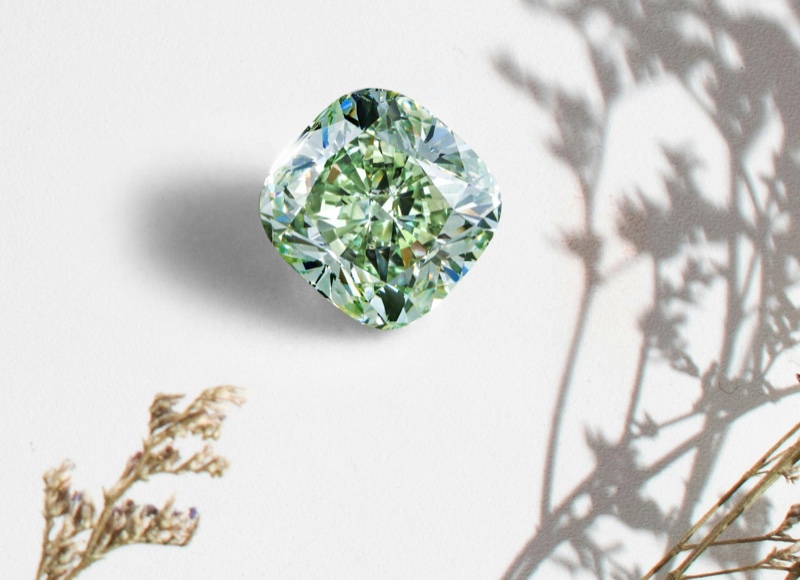
Diamonds are graded on a color scale from D (colorless) to Z (light yellow or brown). Colorless diamonds are the most valuable because they allow the most light to pass through, enhancing their sparkle.
However, diamonds can also come in rare, fancy colors like pink, blue, or yellow, which are prized for their uniqueness. The color of a diamond can significantly affect its appearance and price, making it an essential factor when choosing a diamond.
The most expensive type of diamond is the red diamond. These diamonds are extremely rare and can command prices of over $1 million per carat.
Carat
Carat is the unit of measurement for a diamond’s weight, with one carat equal to 200 milligrams. While carat weight often affects a diamond’s size, it doesn’t always mean a larger appearance, as the cut also plays a role.
Bigger diamonds are rarer and more expensive, but the overall beauty of the diamond depends on a balance of carat with the other Cs.
Popular Diamonds
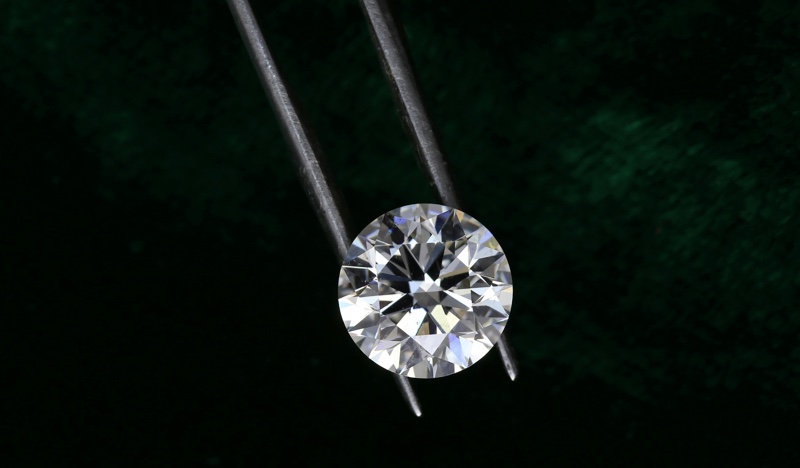
Natural Diamonds
Natural diamonds are formed deep within the Earth over billions of years. They are valued for their rarity and unique formation process, making them the most sought-after type of diamond in the market.
Treated Diamonds
Treated diamonds undergo laser drilling or fracture filling to improve their appearance. While these enhancements can make diamonds more affordable, they may affect durability and are typically less valuable than untreated diamonds.
Lab Grown Diamonds
Man-made or lab-grown diamonds are created in controlled environments. These synthetic diamonds are chemically identical to natural diamonds but are more affordable and environmentally friendly, offering a modern alternative without sacrificing quality or a perfect appearance.
Fancy Colored Diamonds
Fancy-colored diamonds naturally occur in shades like black, pink, blue, and yellow. These rare and vibrant diamonds are highly prized for their unique hues, making them some of the most valuable and desirable.
The color of black diamonds is due to the presence of graphite inclusions, which absorb light, making the diamond appear opaque.
Popular Shapes for Engagement Rings
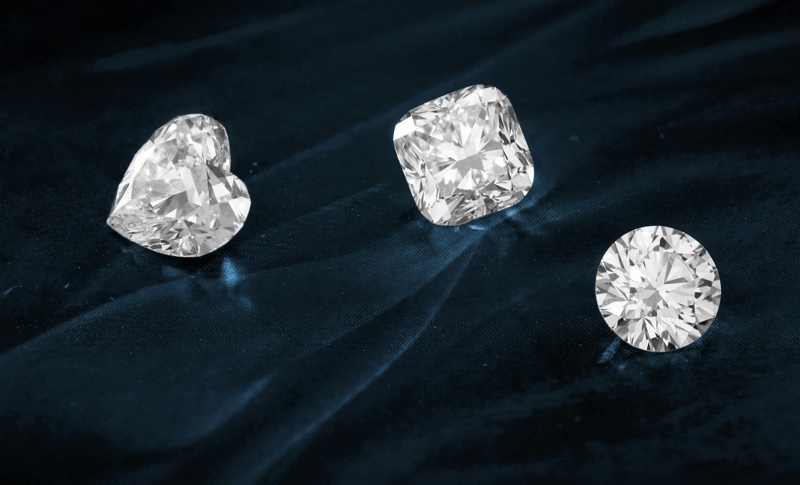
The choice of diamond shape profoundly impacts the style and personality of an engagement or wedding ring. The terms diamond shape and diamond cut are often used interchangeably, but they refer to distinct aspects of a diamond’s appearance and quality.
Shape refers to the diamond’s form, while cut determines the quality of its facets and overall brilliance. These factors, combined with different ring styles, play a crucial role in defining the overall aesthetic of the piece.
Round Brilliant Shape: Developed to maximize sparkle, this shape has stood as the most sought-after for over a century.
Princess Shape: Known for its contemporary, geometrical form, the Princess shape is both modern and versatile.
Cushion Shape: With softened corners and large facets, the cushion shape fuses vintage charm with a soft reflection of light.
Oval Shape: An elongated form that captures brilliant light play appeals to those seeking a unique yet classic look.
Emerald Shape: Characterized by its open step-cut facets and rectangular form, this shape highlights the diamond’s clarity.
Marquise Shape: With its pointed ends and curved sides, this football-shaped form suggests a regal aesthetic popular among vintage enthusiasts.
Pear Shape: Combining elements of round and marquise, its teardrop shape is an epitome of sophistication and elegance.
Asscher Shape: Offering depth in a square format, the Asscher’s X-shaped facets emanate from its corners and compel a second glance.
Diamond Classification
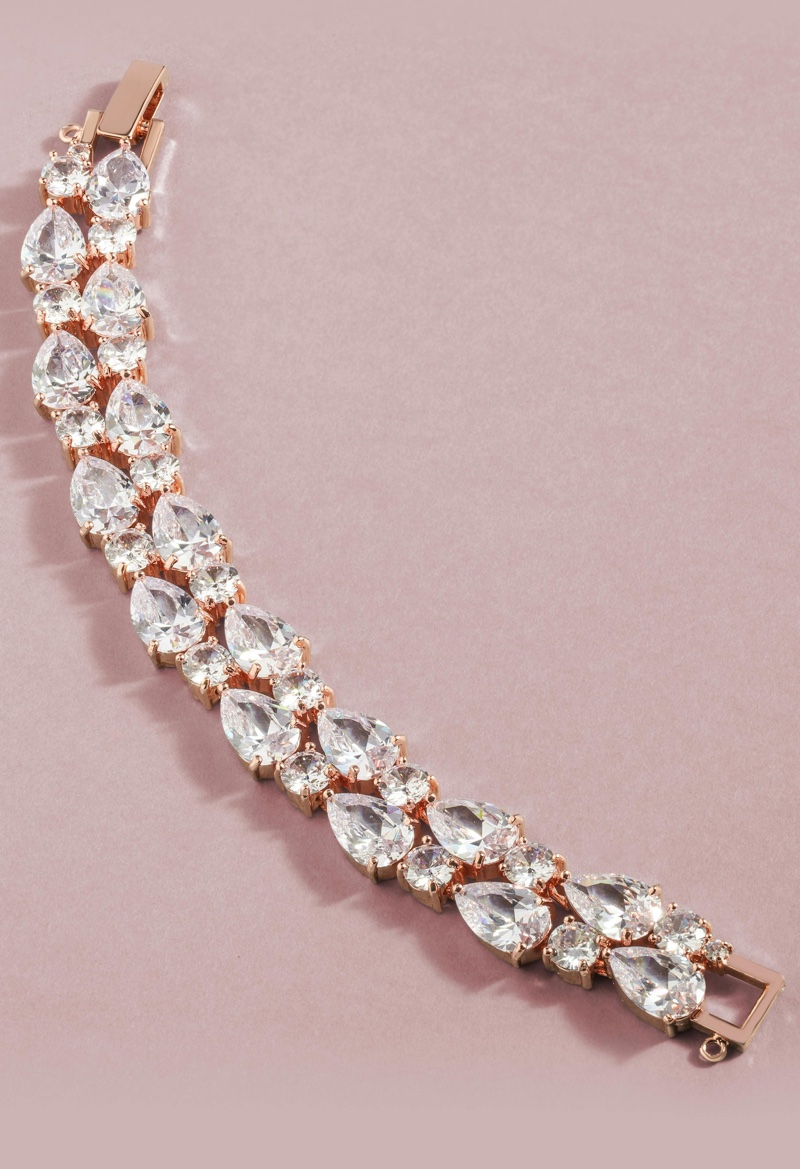
Diamond classification categorizes diamonds based on their chemical composition and internal structure, which affect their color and other physical properties.
The most common classification system includes Type I and Type II diamonds, further divided into subtypes based on the presence of nitrogen or boron impurities.
Type Ia diamonds contain nitrogen in clusters, giving them a yellow tint and making them the most common type.
Type Ib diamonds have isolated nitrogen atoms, resulting in a more intense yellow or brown color, but they are rarer.
Type IIa diamonds are nitrogen-free, making them exceptionally pure and often colorless. They are highly valued for their clarity and brilliance.
Type IIb diamonds contain boron, which gives them a blue or gray hue. They are also known for their electrical conductivity.
Different Settings
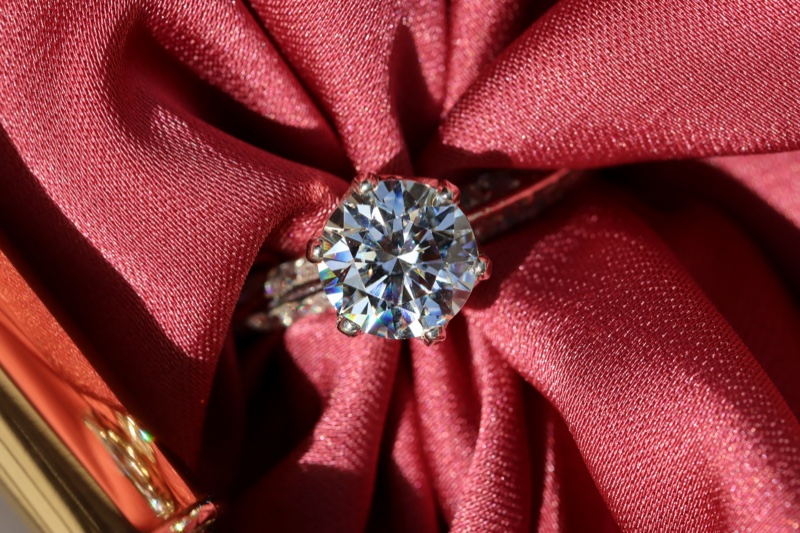
Prong Setting: Holds the diamond with metal prongs (usually four or six), maximizing light exposure. It is well-known for its secure hold. Commonly used in engagement rings and solitaires.
Bezel Setting: Encircles the diamond with a thin metal rim, fully or partially, offering a sleek, modern look. Provides excellent protection, making it ideal for active lifestyles. Frequently used in rings, pendants, and earrings.
Pavé Setting: Sets small diamonds close together with minimal visible metal on the band’s surface, creating a sparkling effect. Popular for its continuous sparkle and commonly found in rings, especially eternity bands, and sparkling jewelry.
Channel Setting: Features diamonds set between two parallel metal walls, sitting flush with the surface for a smooth appearance. Protects diamond edges, suitable for daily wear pieces like wedding bands, eternity rings, and stackable rings.
Halo Setting: A central diamond surrounded by a “halo” of smaller diamonds, enhancing both sparkle and the perceived size of the central stone. Often used in engagement rings, necklace pendants, and earrings.
Tension Setting: Secures the diamond by pressure from the metal band, allowing the stone to appear as if it’s “floating”. Known for its modern, minimalist appearance, it’s mainly seen in engagement rings and contemporary jewelry designs.
Bar Setting: Similar to channel setting but with diamonds held by vertical metal bars, allowing more light exposure. It’s commonly employed in eternity rings and wedding bands.
Cluster Setting: Groups multiple smaller diamonds to mimic a larger stone or create unique shapes. Offers affordability while maintaining visual impact. Used in engagement rings, fashion rings, and earrings.
Flush Setting: This embeds the diamond into a drilled hole in the band, making the diamond’s top flush with the metal surface. It provides excellent protection and a sleek design, typically found in men’s rings and wedding bands.
Vintage or Antique Settings: Incorporates intricate details like milgrain, filigree, or engraving, echoing historical styles (e.g., Victorian, Art Deco). Offers a unique, charming look with timeless appeal, often seen in engagement rings and heirloom pieces.
Other Features
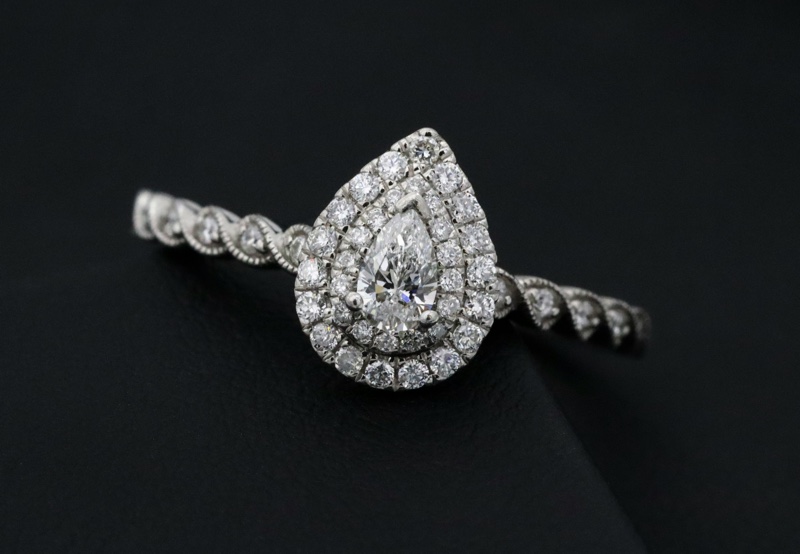
Fluorescence
Fluorescence in diamonds refers to the glow some diamonds emit under ultraviolet light. It can affect the diamond’s appearance, sometimes making it appear hazier or, in some cases, enhancing its color, especially in diamonds with lower color grades.
Certification
Diamond certification is a detailed analysis provided by gemological laboratories like GIA or AGS. These reports offer crucial information about a diamond’s quality, including its cut, clarity, color, and carat weight, ensuring buyers know exactly what they are purchasing.
Some labs also offer a laser inscription service, where the report number is inscribed on the diamond’s girdle for identification purposes.
Ethical Considerations
Ethical considerations involve ensuring diamonds are sourced responsibly, avoiding conflict or “blood diamonds.” Many buyers now seek diamonds certified as conflict-free, emphasizing sustainable practices and fair labor in the diamond mining and production process.
Customization
Customization allows buyers to personalize their diamond jewelry, from selecting a unique cut to designing a bespoke setting. This trend enables a more meaningful and individual connection to the diamond, catering to personal taste and style preferences.
























+ There are no comments
Add yours